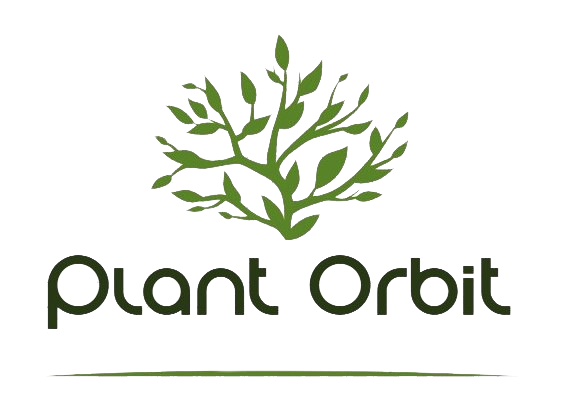Aptenia cordifolia, commonly known as Baby Sun Rose, is a stunning, low-maintenance succulent that thrives in arid climates and adds vibrant color to any garden or indoor space. Recognized for its heart-shaped leaves and charming red or pink blooms, this succulent is popular among both novice and seasoned gardeners. Here’s a comprehensive care guide to help you cultivate a thriving Aptenia cordifolia plant.
1. Overview of Aptenia Cordifolia
Aptenia cordifolia belongs to the Aizoaceae family and is native to South Africa. Known for its vigorous growth, it is often used as ground cover in warm climates or as a cascading element in hanging baskets. The plant's ability to adapt to dry conditions and sandy soils makes it ideal for rock gardens and coastal areas.
Common Names: Baby Sun Rose, Heartleaf Ice Plant
Plant Type: Succulent groundcover
Height and Spread: Reaches up to 4-6 inches tall, spreads widely
2. Light Requirements
Aptenia cordifolia thrives best under full sun to partial shade. When grown indoors, place it near a south-facing window where it receives ample sunlight. Outdoor plants should be positioned in a spot with direct or dappled sunlight for at least 6 hours per day. Limited light exposure may result in fewer blooms and slower growth.
- Ideal Light: Bright, direct sunlight
- Indoor Placement: Within one foot of a sunny window
3. Soil Preferences
One of the keys to a healthy Aptenia cordifolia is well-draining soil. The plant prefers slightly acidic to neutral pH levels and can adapt well to sandy or rocky soils. If you’re potting the plant indoors, use a cactus or succulent soil mix, which is formulated for fast drainage.
- Best Soil Mix: Cactus or succulent mix with added perlite
- Outdoor Soil Preference: Sandy, loamy, or rocky soil with good drainage
- Soil pH: Neutral to slightly acidic
Adding sand or perlite to the soil mix helps improve drainage, reducing the chances of root rot. Make sure your pot has a drainage hole to allow excess water to escape.
4. Watering Needs
As a drought-tolerant succulent, Aptenia cordifolia has relatively low water requirements. During the warmer months, water the plant only when the top inch of soil has dried out. In winter, reduce watering frequency to prevent root rot, as succulents naturally go dormant in colder seasons.
- Warm Season: Water once the soil is dry to the touch
- Winter: Water sparingly, about once a month
Using the “soak and dry” method works best: thoroughly water the soil and allow it to dry out completely before watering again. Avoid letting the plant sit in waterlogged soil.
5. Temperature and Humidity
Aptenia cordifolia thrives in warm temperatures between 65°F and 80°F. It can tolerate temperatures down to about 40°F, but it’s sensitive to frost. In cooler climates, it’s best to grow this plant in containers so you can bring it indoors during the winter months.
- Optimal Temperature Range: 65°F – 80°F
- Minimum Temperature: 40°F (non-frost tolerant)
- Humidity: Moderate, about 40-50%
6. Fertilizing Tips
Aptenia cordifolia is a light feeder and does not require frequent fertilizing. During the growing season, a diluted, balanced fertilizer applied every 6-8 weeks can promote vibrant growth and more blooms. Avoid over-fertilizing, as this can lead to weak, leggy growth.
- Type: Balanced liquid fertilizer, diluted
- Frequency: Every 6-8 weeks during spring and summer
7. Pruning and Maintenance
Pruning is essential for maintaining a compact, healthy plant. Trim back overgrown stems and remove any yellow or damaged leaves to encourage fuller growth. Regular pruning also prevents the plant from becoming too leggy and helps it maintain its lush appearance.
- When to Prune: Early spring before the growing season
- How to Prune: Use clean, sharp scissors to trim back overgrown stems
8. Common Pests and Issues
Aptenia cordifolia is generally resistant to pests and diseases, but it can occasionally attract aphids and mealybugs. Overwatering can also lead to root rot. Here are some tips to prevent these common issues:
- Aphids and Mealybugs: Use insecticidal soap or neem oil as needed
- Root Rot: Avoid overwatering and ensure good drainage
- Sunburn: Excessive direct sun can cause leaf scorching; provide shade if necessary
9. How to Propagate Baby Sun Rose or Aptenia Cordifolia
Propagating Aptenia cordifolia is easy and can be done through stem cuttings. The best time for propagation is in spring or early summer.
- Step 1: Take a healthy stem cutting with at least two leaf nodes
- Step 2: Let the cutting dry for a day or two to prevent rot
- Step 3: Place the cutting in a pot with succulent soil mix and water sparingly
With proper care, the new plant will establish roots within a few weeks.
10. Uses and Benefits of Aptenia Cordifolia
Aptenia cordifolia is more than just a decorative plant; it offers several benefits:
- Ground Cover: Ideal for covering bare patches in gardens
- Erosion Control: Roots help stabilize soil on slopes and prevent erosion
- Low-Maintenance: Drought tolerance makes it suitable for xeriscaping
- Indoor Air Quality: Helps purify the air by absorbing CO₂
Whether as an outdoor ground cover or an indoor plant, Aptenia cordifolia adds visual appeal and practical benefits to any space.
Conclusion :
Aptenia cordifolia is a resilient, vibrant plant that’s perfect for beginners and experienced gardeners alike. By providing adequate sunlight, proper soil, minimal watering, and occasional pruning, you can enjoy this beautiful succulent for years to come. Its low-maintenance nature, along with its ability to adapt to various growing conditions, makes it a great addition to both indoor and outdoor gardens.


